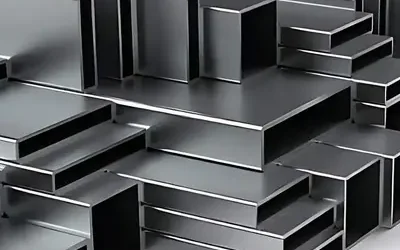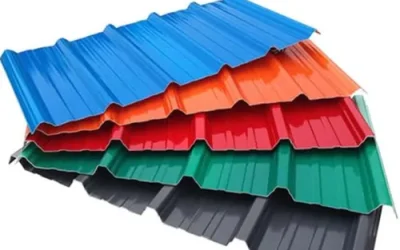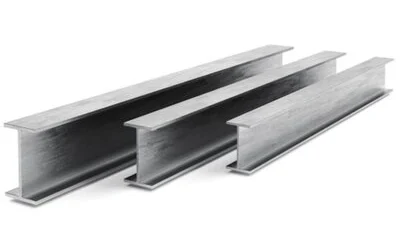- Ana Sayfa
- CNC Plasma Cutting
CNC Plasma Cutting
CNC Plasma Cutting – CNC, Thick Plate & Custom Cut Steel Parts for Export
Industrial Plasma Cutting Solutions
HL Metal provides plasma cutting and CNC plasma cutting services for thick plates, profiles and large metal components.
Our production line is designed for metal plasma cutting, steel plasma cutting and sheet metal plasma cutting projects that require robust capacity and economical performance.
We operate high definition plasma cutting systems with CNC automation to deliver precision plasma cutting for construction parts, machinery components and heavy industry applications.
Export-Oriented Plasma Cutting Company
As a Turkey-based plasma cutting company, HL Metal serves international customers looking for a plasma cutting supplier and plasma cutting manufacturer for structural steel, shipbuilding and heavy fabrication.
We focus on repeatable quality, controlled plasma cutting tolerance and export-ready packaging for OEMs and contractors.
Searching for plasma cutting Turkey, plasma cutting export or plasma cutting fabrication with CNC control? HL Metal offers industrial plasma cutting solutions for thick plates and heavy-duty steel structures.
Quick Facts – CNC & High Definition Plasma Cutting
Below is a quick overview of HL Metal’s CNC and high definition plasma cutting capabilities, main applications and focus areas for export projects.
- Technology: high definition plasma cutting with CNC control for large plates
- Processes: industrial plasma cutting, plasma plate cutting, plasma profile cutting and plasma shape cutting
- Materials: carbon steel, stainless steel and aluminum plates for heavy fabrication
- Focus: thick plate plasma cutting and plasma cutting thickness capacity beyond fiber laser limits
- Applications: construction, steel structures, machinery parts, shipbuilding, heavy industry
- Location: Turkey-based plasma cutting manufacturer with export experience
Plasma Cutting SEO Focus
HL Metal is a Turkey-based plasma cutting supplier and plasma cutting manufacturer offering CNC plasma cutting, metal plasma cutting and industrial plasma cutting services for export projects.
Technical Specification – CNC & High Definition Plasma Cutting
CNC Plasma Cutting Technology
HL Metal uses CNC plasma cutting systems with advanced control units for plate nesting, contour cutting and shape optimisation. The machines are configured for high speed plasma cutting and stable arc control to ensure consistent performance in serial production.High Definition Plasma Cutting
Our high definition plasma cutting units improve edge quality and plasma cutting accuracy on carbon steel, stainless steel and aluminum plates. This allows us to combine fast processing with acceptable tolerance ranges for industrial parts and structural components.| Feature | Capability |
|---|---|
| Process Type | Industrial plasma cutting with CNC control for plates, profiles and shapes |
| Cutting Mode | Automated plasma cutting with nesting, torch height control and programmable paths |
| Material Range | Carbon steel plasma cutting, stainless steel plasma cutting and aluminum plasma cutting |
| Geometry | Plasma plate cutting, plasma profile cutting, plasma shape cutting and plasma part cutting |
| Edge Quality | Balanced between fast plasma cutting and precision plasma cutting requirements |
| Integration | Can be combined with CNC laser cutting and other processes for hybrid projects. |
| Production Model | Long-run plasma cutting fabrication and job-based custom plasma cutting |
Plasma cutting is especially suitable where laser capacity is limited by thickness. HL Metal uses plasma as a complementary process to laser cutting for thick plates and large structural components.
Materials & Thickness – Carbon Steel, Stainless Steel & Aluminum
Steel Plates & Structural Materials
Our workshop is configured for steel plasma cutting on structural plates, base plates and connection plates used in construction and machine building. We regularly process carbon steel plasma cutting in heavy gauges for beams, columns and fabricated steel structures.Ferrous Metals
Ferrous metals cover the main structural steel grades that are typically used in construction and machinery manufacturing projects.- Carbon steel plasma cutting for S235, S275, S355 and similar grades
- Stainless steel plasma cutting for support plates and non-critical surfaces
- Sheet metal plasma cutting for thick plates and heavy parts
- Plasma cut metal plates prepared for machining or welding
Aluminum & Other Materials
Aluminum and other non-ferrous materials are processed for lighter structures and special applications where weight is critical.- Aluminum plasma cutting for structural and shipbuilding applications
- Custom cut steel parts with bevels, slots and openings
- Plasma cut components for mechanical and industrial assemblies
HL Metal can also source plates from its steel service center, combining material supply with plasma cutting service for complete solutions.
Capacity, Thickness & Accuracy – Plasma Cutting Thickness Capacity
Plasma Cutting Thickness Capacity
Our machines are dimensioned for thick plate plasma cutting and large sheet sizes. We focus on ranges where plasma cutting thickness capacity is efficient and competitive. Project-specific plasma cutting max thickness can be confirmed based on grade and edge quality requirements.Cutting Capacity
Cutting capacity defines the practical limits of thickness and plate dimensions for efficient production.- Defined plasma cutting thickness capacity per material and quality level
- CNC plate cutting for long plates and wide sheets
- High speed plasma cutting for repeatable industrial parts
- Fast plasma cutting for time-sensitive construction projects
Tolerance & Accuracy
Tolerance and dimensional accuracy are controlled according to project requirements and application class.- Documented plasma cutting tolerance for structural and general-purpose parts
- Precision plasma cutting for shapes with controlled edge deviation
- Process settings optimised for acceptable plasma cutting accuracy in heavy industry projects
- Optional finishing and machining for tighter final tolerances
For parts that require very tight tolerances, HL Metal can combine plasma with laser cutting or machining to achieve the final specification.
Plasma Cut Metal Plates, Profiles & Custom Components
Custom Cut Steel Parts
HL Metal delivers custom cut steel parts and plasma cut metal plates ready for welding, machining or assembly. Parts are marked, palletised and labelled according to export project needs.Typical Plasma Cut Parts
Typical plasma cut parts include the main plate elements needed in steel structures and machinery frames.- Base plates, gussets and stiffeners from plasma plate cutting
- Brackets, cleats and flanges for steel structures
- Plasma shape cutting for complex geometries and openings
- Plasma part cutting for machine frames and subassemblies
Profiles & Structural Elements
For profiles and structural elements, plasma cutting is used to prepare connection details and reinforcements.- Plasma profile cutting for edge prep and coping on beams and channels
- Reinforcement plates and connection elements for steel structures
- Plasma cut components for heavy industry machinery and equipment
For tube and box section projects, HL Metal also offers laser cutting for tube and hollow section as a complementary process.
For OEM customers, HL Metal can act as a long-term supplier of custom plasma cutting parts under scheduled agreements and framework contracts.
Industries Served – Construction, Steel Structures, Machinery & Shipbuilding
Construction & Steel Structures
Our plasma cutting for construction services support contractors and fabricators working on buildings, industrial halls and infrastructure projects.Construction & Buildings
For buildings and industrial halls, we supply cut and prepared plates that speed up on-site assembly.- Plasma cutting for steel structures including beams, columns and braces
- Anchor plates, stiffeners and connection plates for site assembly
- Heavy base plates and custom details for foundations
Machinery, Shipbuilding & Heavy Industry
Heavy duty industries require robust plate components and welded assemblies produced with consistent quality.- Plasma cutting for machinery parts and equipment frames
- Plasma cutting for shipbuilding for hull parts and internal structures
- Plasma cutting for heavy industry such as mining, cement and energy plants
End-to-End Plasma Cutting Fabrication – From Plates to Welded Assemblies
Plasma Cutting Workshop & Fabrication
HL Metal operates a dedicated plasma cutting workshop as part of its steel service center. We combine plasma cutting solutions with drilling, bevel cutting and fit-up preparation.Core Plasma Cutting Services
Core plasma cutting services cover serial production parts as well as project-based components.- Industrial plasma cutting for large series and repeat parts
- Job-based custom plasma cutting for project-specific components
- CNC plasma cutting with nesting optimisation to reduce scrap
Value-Added Operations
Value-added processes are available to deliver parts closer to a ready-to-assemble condition.- Deburring, grinding and edge preparation on plasma cut plates, combined when needed with guillotine shearing for straight cuts.
- Integration with press brake bending and welding for complete assemblies.
- Combined CNC laser cutting and plasma cutting for mixed-thickness projects.
By combining material supply with plasma cutting fabrication, HL Metal helps clients reduce coordination work and logistics complexity.
Related Metal Processing Services
In addition to thick plate plasma cutting, HL Metal offers a complete metal processing range from sheet to hollow section. You can combine your plasma cutting orders with high-precision laser cutting, shearing and bending operations for a single integrated workflow.Flat Sheet & Plate Processing
For flat sheet and plate requirements, the following services are available as complementary processes.Tube & Hollow Section Processing
For tubes, pipes and hollow sections, laser cutting offers precise openings and joint preparations.- Laser Cutting Tube & Hollow Section – SHS, RHS and pipes
- Combine tube laser cutting with plasma cut base plates for ready-to-weld assemblies.
Plasma Cutting Export – Turkey-Based Supplier for International Projects
Plasma Cutting Turkey & Export Routes
HL Metal is positioned as a plasma cutting Turkey producer supplying projects in Europe, the Balkans, the Middle East and North Africa. We ship plasma cut metal plates and assemblies by full truck or container, using reliable logistics partners.Export-Oriented Cooperation
Export-oriented cooperation focuses on long-term projects and repeat deliveries for OEM and system builders.- Long-term plasma cutting export agreements for OEMs and system builders
- Project-based plasma cutting quotation with detailed documentation
- Support from drawing stage to packaging and loading
Pricing & Cost Structure
Pricing and cost structure are calculated transparently according to material and cutting parameters.- Transparent plasma cutting price calculation per part or per ton
- Plasma cutting cost breakdown by material, cutting time and processing
- Competitive solutions through nesting, shared plates and series production
While online users may search for plasma cutting near me, HL Metal focuses on export-level projects where consolidated deliveries and consistent quality are critical.
Request a Plasma Cutting Quotation – Heavy Plate & Structural Parts
Plasma Cutting Supplier for OEM & Projects
If you need a plasma cutting supplier or plasma cutting manufacturer in Turkey for long-term work, HL Metal can evaluate your drawings and volume forecasts. We support both small job lots and high-volume industrial plasma cutting programs with scheduled deliveries.Information Required for a Fast Plasma Cutting Price
To prepare a detailed plasma cutting quotation, please share:- Material grade and thickness range
- Drawings with dimensions, tolerances and edge specifications
- Required quantities and call-off plan
- Additional processes (bevel, drilling, welding, coating)
- Destination country and preferred incoterm (EXW, FCA, FOB, CIF, DAP)
Our team will calculate the optimal plasma cutting cost based on material utilisation, production time and logistics, and send you a clear project-specific offer.
Plasma Cutting FAQ – CNC, Thick Plate & Export
Here you can find answers to frequently asked questions about HL Metal’s plasma cutting capabilities, materials and export options.1. What is plasma cutting used for at HL Metal?
Plasma cutting at HL Metal is mainly used for thick plate plasma cutting and steel plasma cutting where laser is not economical or feasible. It is ideal for construction plates, machinery bases, shipbuilding parts and heavy industry components.2. Which materials can you cut with plasma?
We provide carbon steel plasma cutting, stainless steel plasma cutting and aluminum plasma cutting. Most of our projects are related to structural steel plates and plasma cut metal plates for fabrication.3. How accurate is CNC plasma cutting compared to laser?
CNC plasma cutting provides good plasma cutting accuracy and repeatable plasma cutting tolerance for structural parts. Edge quality is generally rougher than laser cutting. For parts with very tight tolerances we often combine plasma with laser or machining.4. What is your maximum plasma cutting thickness capacity?
The exact plasma cutting thickness capacity and plasma cutting max thickness depend on the plate grade and required edge quality. In general, plasma is chosen when thickness is beyond laser limits or when a faster, heavy-duty process is needed. You can send your thickness range and we will confirm feasibility.5. Do you offer export-focused plasma cutting services from Turkey?
Yes. HL Metal is a plasma cutting Turkey supplier with strong plasma cutting export experience. We ship custom cut steel parts and welded components to Europe, the Balkans, the Middle East and North Africa using truck and container transport.6. How is plasma cutting price and cost calculated?
Plasma cutting price is typically based on material type, thickness, cutting length, part complexity and batch size. When preparing a plasma cutting quotation we also consider nesting efficiency, scrap ratio and any additional fabrication steps required.Ready to Discuss Your Plasma Cutting Project?
Share your drawings, thickness range and destination details with HL Metal to receive a tailored plasma cutting quotation for construction steel, machinery parts, shipbuilding components or heavy industry projects.Hot Rolled Steel Sheets (Black Steel)
Structural plates & heavy fabrication sheets
High strength hot rolled black steel sheets ideal for construction, steel structures, base plates and general fabrication projects where robust performance and economical cost are required.
Wide thickness range with standard plate sizes available.
Galvanized Steel Sheets
Zinc coated sheets for outdoor durability
Galvanized sheets deliver superior corrosion protection for façades, roofing, HVAC ducts and open-environment steel applications where long-term durability and consistent appearance are important.
Multiple coating weights and thickness options available.
Cold Rolled Steel Sheets
Smooth surface with precision tolerances
Cold rolled sheets are ideal for automotive, white goods, furniture production and other applications requiring clean surfaces, tight dimensional tolerances and good forming properties.
Commercial and drawing-quality grades in coils or cut-to-length.
Hot Rolled Pickled Steel Sheets (HRP)
Clean hot rolled material ready for processing
HRP sheets are descaled and oiled for improved surface quality before welding, bending, laser cutting or painting operations, offering a cleaner base than standard hot rolled material.
Commonly used for machinery frames and coated components.
Stainless Steel Sheets & Plates
Corrosion resistant hygienic materials
Stainless sheets are widely used in food processing, medical installations, chemical plants and marine structures where cleanliness, corrosion resistance and aesthetic appearance are essential.
Various grades and surface finishes on request.
Chequered Plates (Tread Plates)
Anti-slip plates for safety flooring
Tread plates ensure safe walkways, ramps, platforms and stairs with raised grip patterns, providing improved slip resistance in industrial, commercial and logistics environments.
Standard sizes with optional cutting services available.
Request Your Steel Sheet Quotation
Submit your thickness, dimensions, quantities and destination details. HL Metal will prepare a tailored quotation for export or domestic supply, matching the most suitable sheet type to your project requirements.



